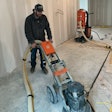
Continuing our series with a roadmap for how to “break the tradesman’s curse” to grow your business (see the article from the October/November 2023 issue here, Part 1: Standard Operating Procedures, Part 2: Project Analysis, Part 3: Setting Quality Standards, Part 4: Key Performance Indicators and Part 5: Employee Scorecards) …
One of the biggest struggles when growing a business is figuring out how to motivate, retain and attract great team members. We are going deep into strategy on this blog post to discuss a system that optimizes productivity and quality so everyone in the company has the opportunity to achieve their full potential! Everyone can win, because the company will never pay more or less than it can afford while growing profits through efficiency.
For this topic, we will focus on field technicians, because they are typically the most problematic and complicated to manage and incentivize in our industry, but we can use this example to build a better pay structure for sales and administrative teams, as well. A great incentive structure will draw in talent, because A-players will benefit the most from a performance-based pay structure. When they hear about the opportunity and success of your team, they will come to you!
Typically, field technicians are paid hourly for employees, or by the job for subcontractors. There are legalities about how to pay, so it’s important to comply with any federal, state, and local employment laws when building your incentive structure.
The upside for hourly pay is the incentive to slow down for quality—but it doesn’t reward for productivity or efficiency. That’s a big problem, because it doesn’t connect their time on a project with the value they produce. This disconnect prevents them from fully understanding how they bring value to the company.
Typically subcontractors are paid by the job. This is a great way to motivate for productivity, but incentivizing for quality becomes a big challenge. Subcontractors are, by definition, a competing entity. Training them for skills, teaching them company standard operating procedures, having company branded uniforms and wrapped vehicles, etc., are all great ways to build a strong team—but they are also very likely to have employee misclassification violations for subcontractors. In a nutshell, the subcontractor business model becomes increasingly less viable as the management structure improves. This is a counter-productive way to grow.
I was a successful subcontractor for many years, but through my career, as a field technician, I began to see the downsides and problematic nature of this relationship. So when I stopped subcontracting, I wanted to build my company with in-house employees. After a couple years and continuing to grow the business, I ran into problems with productivity, which resulted in having to micromanage projects. If I didn’t, we could quickly exceed time budgets, and it was killing our profitability.
For years I had a dream to marry all the best aspects of subcontractors and in-house employees into one system. I wanted a scalable system to develop an awesome team and give them uncapped earning potential while also training and incentivizing for quality.
The in-house field technician business model is optimal for a high-performance company because there aren’t limitations for training, team building and SOP’s. Another great optimization advantage is the business can more efficiently provide for all crews, insurance, workers compensation, HR management for apprentices and coworkers, hiring and on-boarding, customer service, scheduling, etc. The business is better equipped to handle office and administrative work so the field technicians can do what they do best, provide craftsmanship and give the client a five-star experience every time without the hassle of balancing several responsibilities outside of doing the work in the field. There is a big efficiency gain over subcontractors with this system because the alternative would require each subcontractor entity to independently provide all of these components. The in-house model can provide all of these components as one unified system for all employees. So, that bring us to performance pay.
The biggest complaint you will hear about having in-house field technicians is that they aren’t motivated like a subcontractor and that managing them is too much work. A performance pay structure is the solution to this problem. Uncap their pay potential and show them the real value they bring to the table.
How does performance pay work?
The basic idea of performance pay is that the pay is tied to the value the team member brings to the company. The higher the value, the higher the pay. The budgeted pay to the field technicians can be based on piecework or a percentage of what’s charged to the client for labor. The employees can be paid an hourly wage that counts against the budgeted pay. The hourly pay must be compliant with employment laws. When the project is completed and all the hours are accounted for, the hourly pay is deducted from the budgeted pay and the difference becomes a bonus. The bonus is discretionary pay and must be compliant with employment laws. If the hourly pay exceeds the budgeted pay, there is no available bonus and a meeting can be made to determine if it was estimated accurately or if the field technicians need to be more productive and efficient. Either way, it’s a great opportunity to develop for improvement so everyone can win as a team.
How to get started
If you already have in-house field technicians, run the numbers for the best-performing crew as if they were on the performance pay system and see what their bonus would have been. It is ideal for approximately one-third of their pay to be bonus. Analyze areas for improvement on efficiency and make adjustments as necessary. Do a test run with the best crew: Explain how it works and brainstorm ideas about how they can optimize for productivity and efficiency. Run the system for a couple months to dial it in. A top -performing crew will thrive with this system. Then you can use the success as an example to roll out the performance pay system to the rest of the crews.
If you’re already using subcontractors, think about which sub crew has the best combination of performance and being a team player. Run the numbers as if they were on the performance pay system and figure out what their hourly base pay would be if approximately 1/3 of their pay was left for bonus. Have a meeting with the sub crew about becoming a in-house employees. One of the most attractive reasons to go in-house is to reduce stress and hassle. Explain to them that the business will be a great resource for them and they won’t be spread thin trying to juggle many hats while running an independent business as a subcontractor. They can focus on the craftsmanship and still be rewarded for the value they bring with the performance pay system. By leveraging the power of a great team, every team member has the opportunity to far exceed what they could have done on their own. They could transition to growing a division of the company or becoming a trainer, foreman, estimator, or salesperson. There is great incentive for team members to build the company as a whole when there are many avenues for success and personal development.
How to manage a performance pay structure
If the bonus system is too simple, it won’t effectively show value based on merit and the employees will lose interest. If it’s too complicated, then it’s too difficult to manage. Software and time-tracking apps solve the complication. We have a system that accounts for how many hours the employees had on a project, what the total cost of labor was on a project, and what skill level ranking each employee is. We use software that does all the complicated mathematical equations and pays out bonuses based on how many hours each employee had on the project, their skill level and available bonus. There is very little to manage when employees know what projects to clock into. We can send employees monthly reports with project breakdowns and bonus pay. We can use this information to continuously improve and become a better team with our field technicians.
Strategy tips
- Having in-house employees gives the company the opportunity to provide continuing education and training opportunities. Build the team stronger over time!
- Opportunities for benefits like paid time off, IRA match and healthcare are great for quality of life and employee retention.
- Overtime pay can quickly blow labor budgets. Instead, encourage your team to get the most value for their time by working productively and efficiently to avoid working long hours. Your team will have better quality of life and job satisfaction if they aren’t overworked and burned out.
- Performance pay gives team members that plan, strategize, and prepare for their day a great opportunity. They deserve the best pay for the time and value they bring.
- Employees that are on their phone or lazy will likely be weeded out because the other team members that have better work ethic will not put up with it. The system will show the disparity and self-manage these problems. Milking the clock will no longer be a problem.
- A performance pay system gives the team incentive and structure to be self-motivating, which results in fewer projects that must be micromanaged.
Next steps
Now that you have a great foundation for a system that can fundamentally change your business, don’t do status quo! Don’t be afraid to step outside the box, put in the work and operate at a high level. It will take a lot of hard work to implement a great performance system, but you have a great head start and have the opportunity to redefine what success looks like in the flooring industry. If you want to learn more about our management structure and how to implement a performance pay system, feel free to contact me. I love to see and hear about other companies doing great things in our industry!
Editor's Note:
Be sure to read the WFB Magazine article “Building Systems to Break the ‘Tradesman’s Curse’ for Growth in Your Wood Flooring Business” and all of Matt's blog posts in this series:
Breaking the “Tradesman’s Curse” for Growth, Part 1: Creating Your Standard Operating Procedures
Breaking the 'Tradesman’s Curse' for Growth, Part 2: Project Analysis
Breaking the 'Tradesman’s Curse' for Growth, Part 3: Setting Quality Standards
Breaking the 'Tradesman’s Curse' for Growth, Part 4: Key Performance Indicators
Breaking the 'Tradesman’s Curse' for Growth, Part 5: Employee Scorecards
Breaking the 'Tradesman’s Curse' for Growth, Part 6: Performance Pay
Breaking the 'Tradesman’s Curse' for Growth, Part 7: The Power of Cash Flow
































